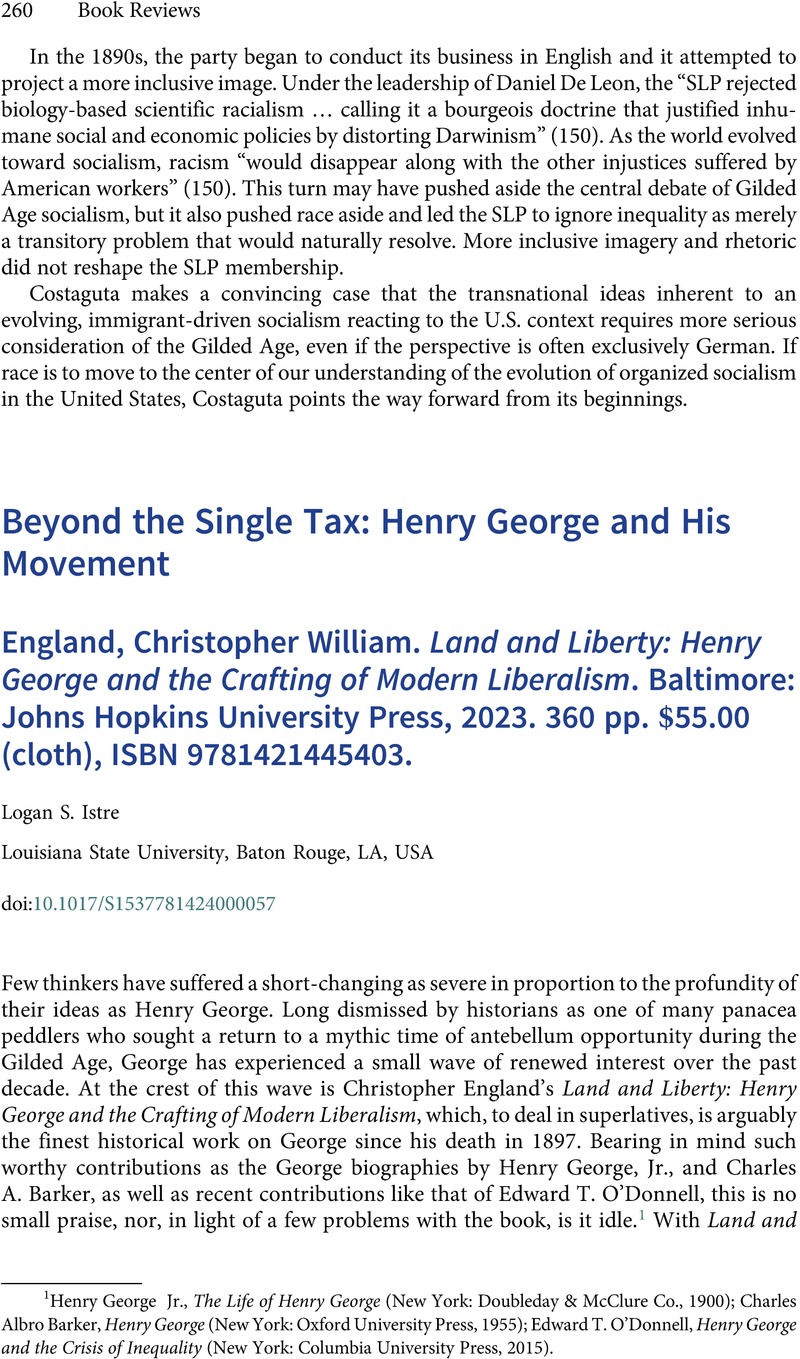No CrossRef data available.
Article contents
Beyond the Single Tax: Henry George and His Movement - Christopher William England. Land and Liberty: Henry George and the Crafting of Modern Liberalism. Baltimore: Johns Hopkins University Press, 2023. 360 pp. $55.00 (cloth), ISBN 9781421445403.
Review products
Published online by Cambridge University Press: 17 May 2024
Abstract

- Type
- Book Reviews
- Information
- The Journal of the Gilded Age and Progressive Era , Volume 23 , Issue 2 , April 2024 , pp. 260 - 262
- Copyright
- © The Author(s), 2024. Published by Cambridge University Press on behalf of the Society for Historians of the Gilded Age and Progressive Era (SHGAPE)
References
1 George, Henry Jr. The Life of Henry George (New York: Doubleday & McClure Co., 1900)Google Scholar; Barker, Charles Albro, Henry George (New York: Oxford University Press, 1955)Google Scholar; O’Donnell, Edward T., Henry George and the Crisis of Inequality (New York: Columbia University Press, 2015)Google Scholar.
2 Young, Arthur Nichols, The Single Tax Movement in the United States (Princeton, NJ: Princeton University Press, 1916).Google Scholar
3 O’Donnell, Edward T., “Henry George and the ‘New Political Forces’: Ethnic Nationalism, Labor Radicalism, and Politics in Gilded Age New York” (PhD diss., Columbia University, 1995)Google Scholar.


